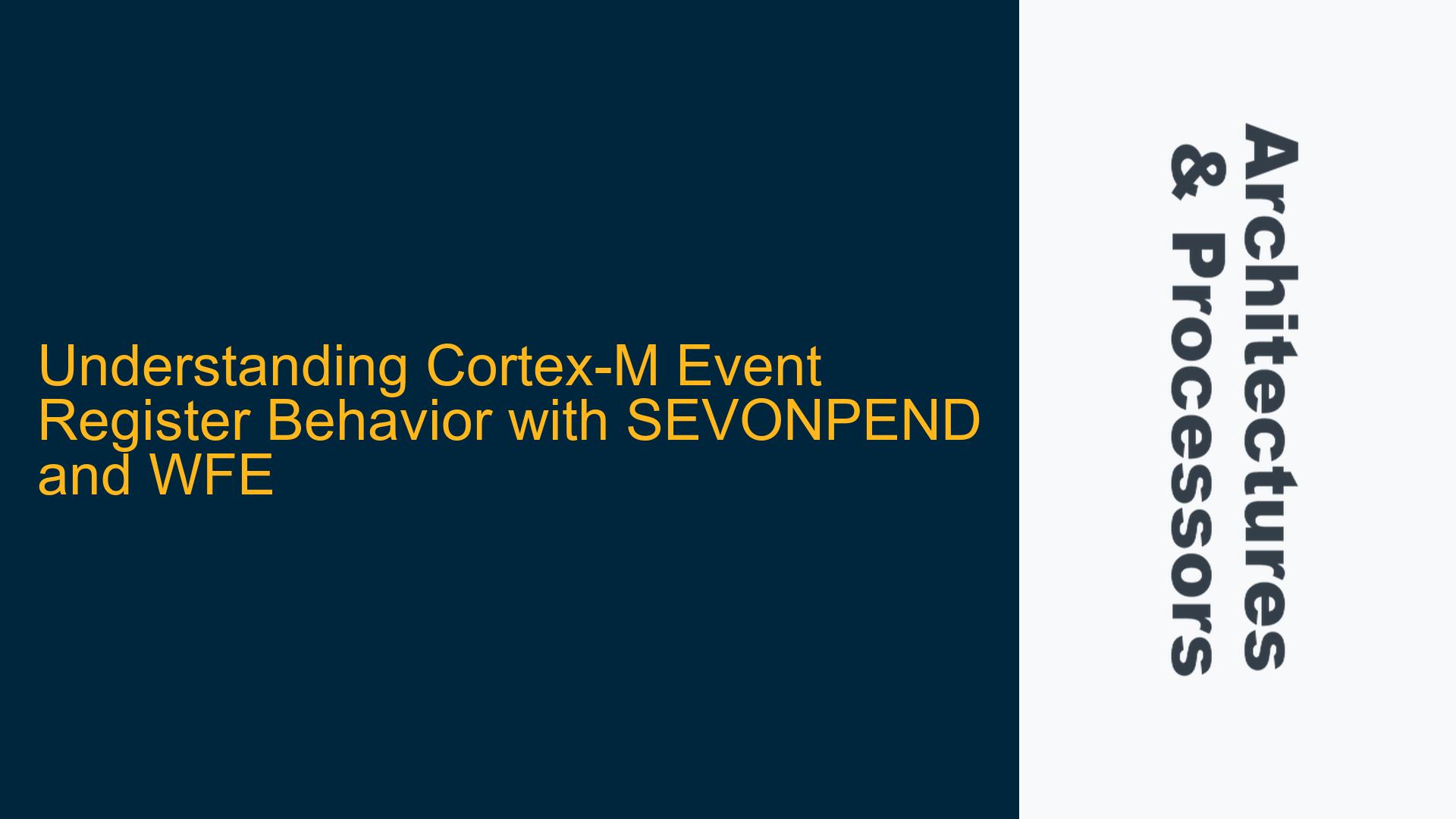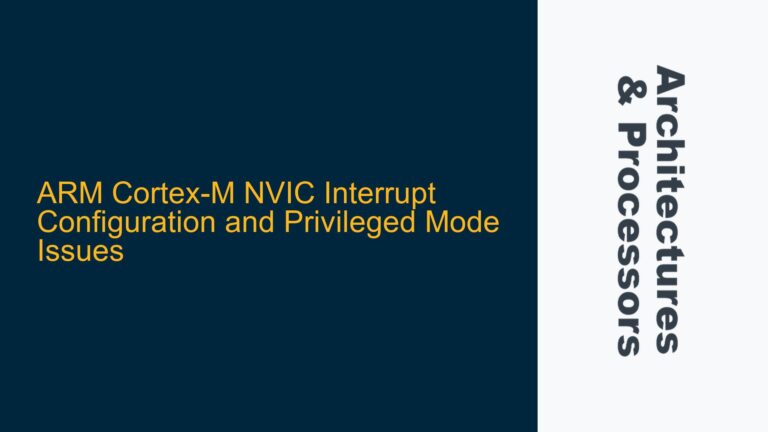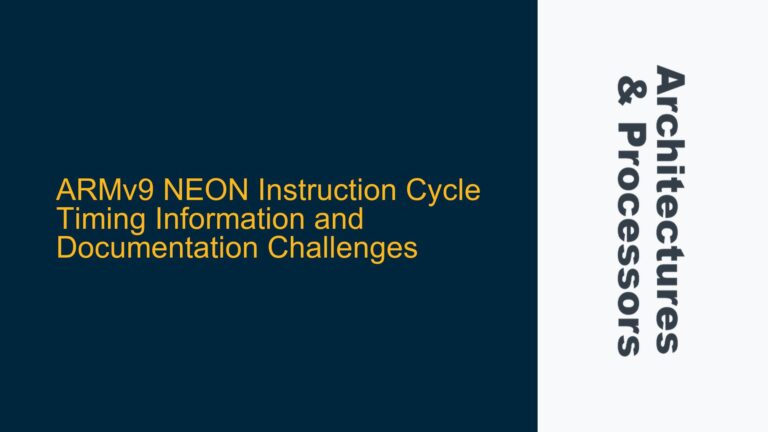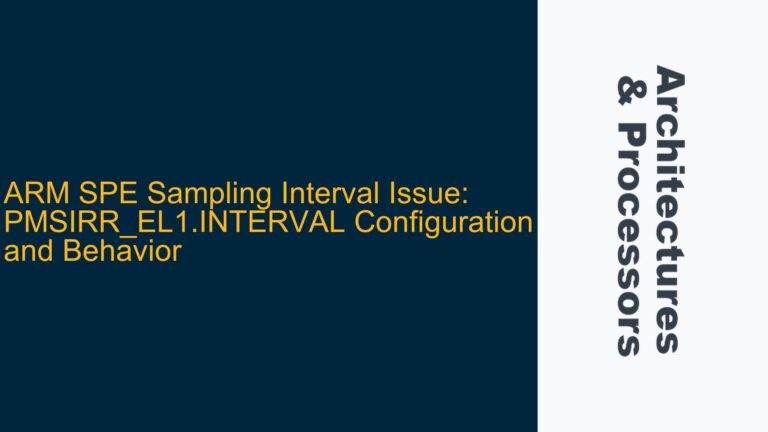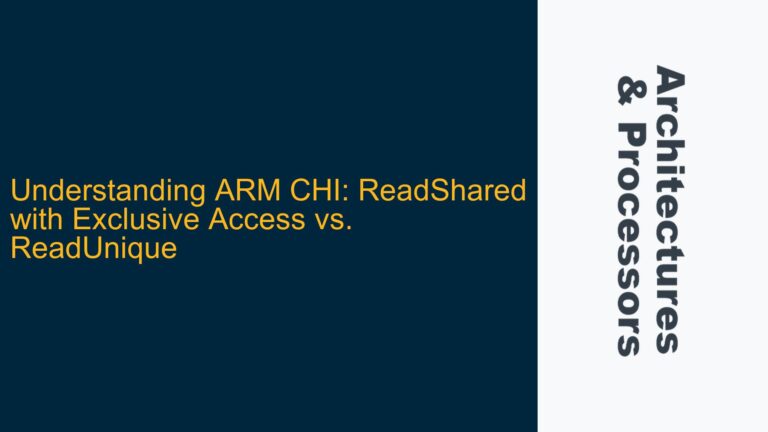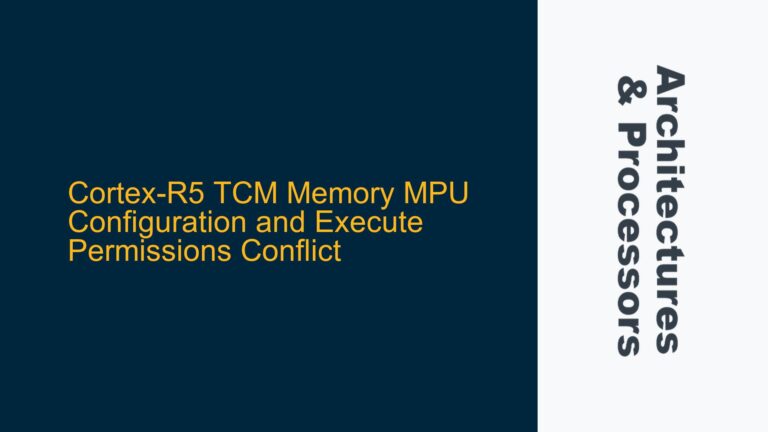Cortex-M Event Register Behavior During Interrupt Handling with SEVONPEND Enabled
The Cortex-M architecture provides a robust mechanism for handling interrupts and events, which is critical for real-time embedded systems. One of the key features in this context is the Event Register, which plays a pivotal role in managing low-power modes and interrupt-driven workflows. When the SEVONPEND (Send Event on Pending) bit in the System Control Register (SCR) is enabled, the behavior of the Event Register becomes particularly nuanced, especially when dealing with pending interrupts and the Wait For Event (WFE) instruction. This post delves into the intricacies of how the Event Register is set and cleared under these conditions, providing a detailed analysis of the underlying mechanisms and potential pitfalls.
The Event Register is a single-bit flag that can be set by various events, including the execution of the SEV (Send Event) instruction or the occurrence of a new pending interrupt when SEVONPEND is enabled. The WFE instruction can be used to clear the Event Register and put the processor into a low-power state until an event occurs. However, the interaction between these instructions and the interrupt handling logic can lead to subtle race conditions and unexpected behavior if not properly understood.
SEVONPEND and Event Register Set Conditions
The SEVONPEND bit in the SCR is a powerful feature that allows the processor to wake up from low-power modes when a new interrupt becomes pending, even if the interrupt is disabled or has insufficient priority to cause an exception entry. When SEVONPEND is set to 1, any new pending interrupt will trigger an event, setting the Event Register. This behavior is crucial for systems that rely on low-power modes but still need to respond to external stimuli promptly.
Consider a scenario where the SEVONPEND bit is enabled, and a peripheral interrupt (PERIPHERAL_IRQn) is cleared and enabled in the NVIC (Nested Vectored Interrupt Controller). If the peripheral fires an interrupt, PERIPHERAL_IRQn will be set to pending. However, if the interrupt is masked by PRIMASK or has insufficient priority, the interrupt will not be served immediately. In this case, the Event Register will be set due to the new pending interrupt, as specified by the SEVONPEND mechanism.
The Event Register is set only when an interrupt transitions from not pending to pending. If the interrupt is already pending and another interrupt request occurs, the Event Register will not be set again because the state of the interrupt has not changed. This behavior is critical to understand when designing systems that rely on the WFE instruction to enter low-power modes, as it affects how the processor wakes up in response to multiple interrupt requests.
Race Conditions and Event Register Clearing with WFE
The interaction between the SEV and WFE instructions can lead to race conditions if not carefully managed. The WFE instruction clears the Event Register and puts the processor into a low-power state until an event occurs. If an event occurs between the execution of SEV and WFE, the processor may not enter the low-power state as intended, leading to unexpected behavior.
For example, if the SEV instruction is executed to set the Event Register, and then the WFE instruction is executed to clear it and enter a low-power state, any event that occurs between these two instructions can cause the processor to wake up immediately. This can happen if an interrupt becomes pending after the SEV instruction but before the WFE instruction is executed. In this case, the Event Register will be set again, and the processor will not enter the low-power state.
To avoid such race conditions, it is essential to ensure that the sequence of SEV and WFE instructions is atomic with respect to interrupt handling. This can be achieved by disabling interrupts around the critical section of code that contains the SEV and WFE instructions. By doing so, the processor can safely enter the low-power state without being woken up prematurely by an interrupt.
Implementing Proper Event Handling and Low-Power Mode Management
To ensure reliable operation of the Cortex-M processor in low-power modes, it is crucial to implement proper event handling and low-power mode management. This involves understanding the conditions under which the Event Register is set and cleared, as well as the potential race conditions that can arise from the interaction between SEV and WFE instructions.
One effective approach is to use a combination of SEVONPEND and WFE instructions in a controlled manner, ensuring that the Event Register is set only when necessary and that the processor enters the low-power state only when no events are pending. This can be achieved by carefully managing the interrupt handling logic and ensuring that the sequence of SEV and WFE instructions is atomic with respect to interrupt handling.
Additionally, it is important to consider the impact of interrupt priorities and masking on the behavior of the Event Register. Interrupts that are masked by PRIMASK or have insufficient priority will not cause an exception entry but can still set the Event Register if SEVONPEND is enabled. This behavior must be taken into account when designing the interrupt handling logic to ensure that the processor wakes up from low-power modes only when necessary.
In conclusion, the behavior of the Event Register in the Cortex-M architecture is a critical aspect of low-power mode management and interrupt handling. By understanding the conditions under which the Event Register is set and cleared, as well as the potential race conditions that can arise from the interaction between SEV and WFE instructions, developers can implement robust and reliable low-power mode management strategies in their embedded systems. Properly managing these mechanisms ensures that the processor enters and exits low-power modes as intended, leading to more efficient and reliable operation of the system.
